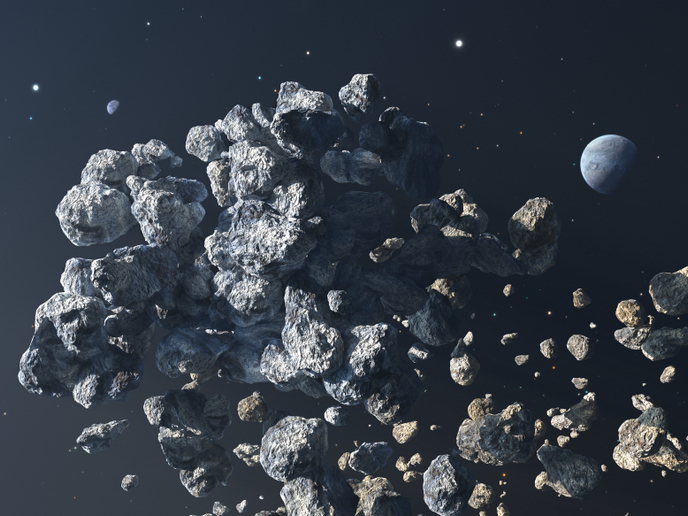Realistic simulations could shed more light on asteroid secrets swirling in our Solar System
Asteroids are the building blocks of our Solar System, unimpeachable witnesses of planetary formation and evolution. They are leftovers of the original formation process about 4.6 billion years ago and have remained relatively unchanged since then. To understand the chemical and physical conditions upon which planets formed, scientists need to gain further insight into the asteroid composition, evolution and interactions. Using the analogy of a murder scene, the blood spilled all over a place (asteroids) can sometimes reveal more about the case than the body lying on the floor (planets). Despite the recent flurry of exploration activities, very little is known about asteroids. Most available information comes from ground-based telescopes, which is not sufficient to reconstruct key properties, such as their internal structure. In addition, few minor planets – various asteroids, dwarf planets and Kuiper belt objects – have been visited by space probes so far.
N-body simulations add up to existing knowledge
“Numerical simulations offer great potential for simulating the properties and dynamic evolution of asteroids at a relatively low cost. However, state-of-the-art numerical methods are not accurate enough,” notes Fabio Ferrari, coordinator of the GRAINS project which received funding under the Marie Skłodowska-Curie programme. GRAINS worked to enhance the realism of such simulations and enable the low-cost exploitation of available survey data. N-body simulations(opens in new window) are among the most suitable methods of studying rubble pile(opens in new window) asteroids. “Most small- and medium-sized asteroids are thought to be rubble piles. This term is widely used to indicate that these celestial objects are made of loosely consolidated material kept together by mutual gravity only, rather than material strength,” explains Ferrari. With a minimum or no tensile strength, they are called weak aggregates as their building blocks (boulders and pebbles) are held together by gravity. “N-body simulations can reproduce aggregation scenarios after asteroid disruption and allow the study of the dynamic and collisional evolution of smaller, cohesive pieces (fragments) up to the formation of a stable aggregate.” A major shortcoming of N-body simulations is that they can handle only point-mass or spherical particles and cannot model the rigid body motion of each single fragment. Multibody simulations which model the dynamic motion of granular particles can describe the physical interactions between a large number of complex-shaped rigid bodies. However, this method cannot handle gravity interactions.
Combining the best of both worlds
GRAINS took big steps forward towards a more realistic representation of gravitational and granular dynamics compared to state-of-the-art methods. “We exploited the advantages of both codes into a single numerical implementation that can properly and accurately address the coupled gravitational–granular problem. A first, our new numerical tool can handle efficiently and accurately contact/collision and gravity interactions between a large number (hundreds of thousands) of non-spherical fragments,” notes Ferrari. The project team implemented the newly developed code to reproduce the bulk properties of known rubble pile asteroids (Bennu, Ryugu and Didymos). Simulation results were of a very high accuracy and spatial resolution.
Why asteroids are so important
Asteroids do not only help answer key questions about the formation of our Solar System. Scientists have also come to recognise that these small worlds can serve as fuel resources for spacecraft on their way to farther destinations. Ultimately, some asteroids may be hazards to Earth. The AIDA(opens in new window) mission aims to test and validate impact models of whether a spacecraft could successfully deflect an asteroid on a collision course with Earth.







